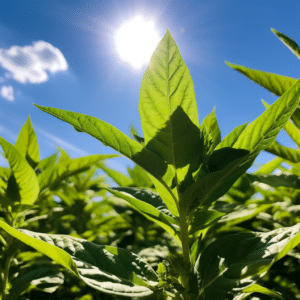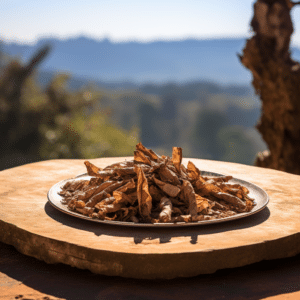Whether you’re a hobbyist, a connoisseur, or simply curious, growing tobacco at home can be a rewarding and educational endeavor. This article will guide you through the process, from selecting the right seeds to curing your tobacco for use.
Understanding Tobacco

Tobacco, scientifically known as Nicotiana tabacum, is a plant native to the Americas but now grown worldwide. It’s renowned for its leaves, which, when cured, are used to make products like cigarettes, cigars, and pipe tobacco.
There are several varieties of tobacco, each with its unique characteristics. The most common include Burley, Virginia, and Oriental. Your choice of variety will depend on your personal preferences and the climate in which you live.
Choosing the Right Variety
Burley tobacco is known for its light color and mild flavor. It’s often used in cigarette blends. Virginia tobacco, on the other hand, is darker and sweeter, making it ideal for pipe tobacco. Oriental tobacco is small and aromatic, used primarily in Turkish cigarettes.
When choosing a variety, consider your local climate. Tobacco is a warm-season crop that prefers well-drained soils and full sunlight. Some varieties are more tolerant of cooler climates than others, so choose accordingly.
Starting Your Tobacco Plants

Once you’ve chosen your tobacco variety, the next step is starting your plants. This process involves germinating your seeds, nurturing your seedlings, and eventually transplanting them to your garden.
Tobacco seeds are incredibly small and require careful handling. They’re typically started indoors under controlled conditions before being moved outside.
Germinating Your Seeds
To germinate your tobacco seeds, sprinkle them on the surface of a seed starting mix. Do not cover them, as they need light to germinate. Keep the soil moist and place the tray in a warm location. Germination should occur within 7-14 days.
Once your seedlings have developed their third leaf, they’re ready to be transplanted. Be gentle during this process, as tobacco seedlings are delicate.
Transplanting Your Seedlings
Before transplanting your seedlings, prepare your garden bed. Tobacco prefers well-drained soil with a pH between 5.8 and 6.5. Add compost or manure to improve soil fertility.
Transplant your seedlings 2-3 feet apart to allow for growth. Water them thoroughly after transplanting and keep the soil moist until they’re established.
Caring for Your Tobacco Plants
Proper care is crucial for a successful tobacco crop. This includes regular watering, pest control, and topping and suckering your plants.
Watering and Fertilizing
Tobacco plants require regular watering, especially during dry periods. However, avoid overwatering, as this can lead to root rot. Fertilize your plants every 2-3 weeks with a balanced fertilizer to promote healthy growth.
Pest Control
Tobacco is susceptible to several pests, including aphids, hornworms, and flea beetles. Regularly inspect your plants for signs of damage and treat with appropriate pesticides if necessary.
Topping and Suckering
Topping involves removing the flower bud to encourage leaf growth. Suckering is the process of removing the small shoots that appear at the leaf axils. Both practices help direct the plant’s energy towards leaf production.
Harvesting and Curing Your Tobacco

The final steps in growing tobacco are harvesting and curing. These processes are crucial for developing the flavor and aroma of your tobacco.
Harvesting
Tobacco leaves are harvested when they’re fully mature. This is typically when they’ve reached their maximum size and have started to yellow. Harvest leaves by removing them from the bottom of the plant upwards.
Curing
Curing is the process of drying your tobacco leaves to develop their flavor. This can be done through air curing, flue curing, sun curing, or fire curing. The method you choose will depend on your tobacco variety and desired flavor profile.
Once your tobacco is cured, it’s ready to be shredded and used. Remember, tobacco is a natural product, and its flavor will continue to develop over time.
Conclusion
Growing tobacco at home can be a rewarding experience, offering a deeper understanding of the process behind the products many enjoy. With patience, care, and a bit of knowledge, you can cultivate your own tobacco and enjoy the fruits of your labor.
